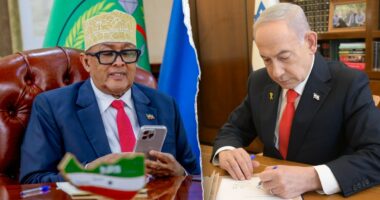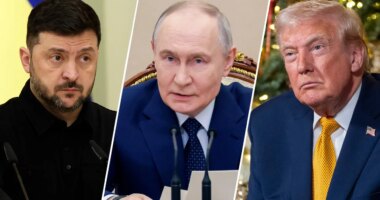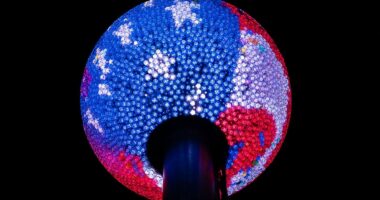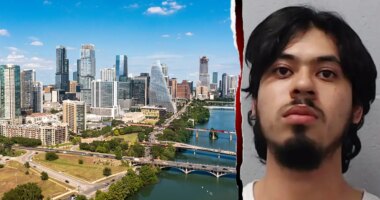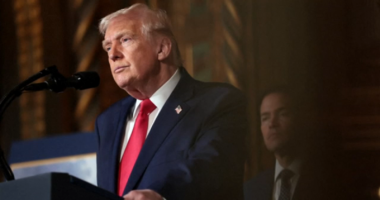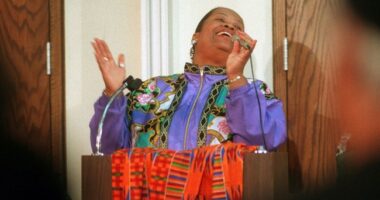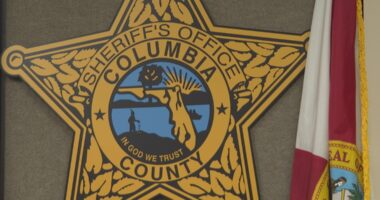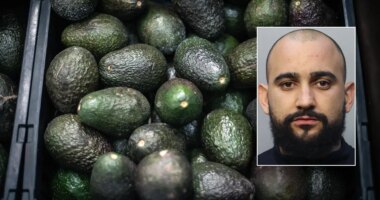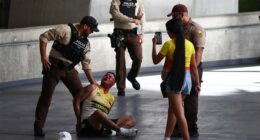Share this @internewscast.com
The names of those who perished during the Cambodian genocide are inscribed on glass panels of a memorial wall located on Chicago’s Northwest Side.
“They were gone, innocent, and we don’t see them again,” Sokhom Nuth said.
ABC7 Chicago is now streaming 24/7. Click here to watch
She is among the survivors of the Khmer Rouge.
“If we escape, we have two choices: We stay alive or we die,” Nen Sok said.
This tragic event occurred 50 years ago when a Communist regime seized control of Cambodia in 1975, sparking a brutal campaign that became recognized as one of the most horrific mass killings of the 20th century.
“A lot of people don’t know this about us and our community,” Laura Ouk said.
Ouk is the board president of the National Cambodian Heritage Museum and Killing Fields Memorial in Albany Park.
“Specific groups were targeted more than others and were sent to what became known as the killing fields,” Ouk stated. “Our people were essentially sent there to be wiped out.”
But Ouk is now a crusader, determined to preserve the stories of her family and her elders, so that it never happens again.
“For so long we’ve been invisible, and we’ve just kind of been that history that’s been forgotten,” Ouk said.
Under the four-year reign of terror of the Khmer Rouge, an estimated two million people were killed: wiping out entire families.
“My brother, my sister-in-law, my niece and nephew, plus my uncle, my aunty,” Sok said. “I think close to 25 people.”
Sok estimates each genocide survivor lost at least five family members on average.
Sok said his only chance of survival was to escape by night to live in the jungle. And he said he wasn’t alone. Sok guesses that about 500 other people found refuge in the jungle.
Sok’s story of survival is among those printed on the walls of the Killing Fields Memorial at the museum, located at 2831 W. Lawrence Ave. Now 70 years old, Sok also works at the museum as the director of community relations.
“Our museum is the only museum of its kind in the U.S.,” Ouk said. “We actually exist to provide education about our community and provide a space of healing for our community, as well.”
The museum held a Day of Remembrance on April 17, where people like Nuth shared the horrifying moments of their dark history in order to heal.
Holding back tears, she remembered the day someone was punished for allegedly stealing rice.
“They (soldiers) woke us up in the middle of the night to watch them punish that person until he died in front of us,” Nuth said. “All we do is just pray. I pray all the time. I wake up and pray, all day, all night.”
Nuth shared her story of survival to teach future generations. But others in the community have struggled to talk about what happened a half-century ago.
“Everyone in our community is in different stages,” Ouk said. “I want to be able to get my community, get my family, to a place where they can feel safe and feel at a point that they’re thriving and no longer hanging on to that survival mode.”
Ouk’s family fled to Paris, where she was born, escaping the brutal regime. To this day, Ouk said she still doesn’t know how her own parents survived.
“I never actually heard my parents say their full story,” Ouk said.
And yet, Ouk has dedicated her career to being an educator and to building a curriculum for Illinois Public Schools as part of the Teaching Equitable Asian American Community History, or TEAACH, Act. It made Illinois the first state to mandate Asian American Pacific Islander history be taught in public schools.
“I was also a student in the Illinois public school system; so, it’s kind of a full-circle moment,” Ouk said.
And as the community continues to heal, the museum hosts a commemorative event every year to mark and remember the dark chapter in history.
“Together with the community, I had a chance to pay respect to the souls of the voiceless, innocent victims,” Nuth said.
Sok, holding a candle, said “It’s hard, but I can see the whole three million people in the flame. They died with hard times, but now there’s peace.”
Note: There are varying numbers on how many people were killed in the Cambodian genocide. Different academic sources report anywhere from 1.5 to 3 million.
Copyright © 2025 WLS-TV. All Rights Reserved.


